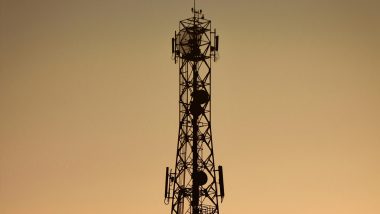New Delhi, May 2: Promising rationalisation of levies such as spectrum charges to rejuvenate debt-ridden telecom sector, the proposed new telecom policy seeks to provide broadband access to all with 50 mbps speed, 5G services and create 40 lakh new jobs by 2022.
The draft policy branded as 'National Digital Communications Policy 2018' was unveiled by the government yesterday. It also aims to attract USD 100 billion or about Rs 6.5 lakh crore investments in the digital communications sector by 2022 with the help of reforms.
Telecom operators body Cellular Operators Association of India (COAI) said the government needs to allow tax-free bonds for telecom sector to attract such large-scale investments.
"The industry had also recommended that the telecom/telecom infrastructure industry should also be made eligible for access to long-term and low-cost debt to be provided by infrastructure debt funds and also establishment of Telecom Finance Corporation (TFC)/infrastructure bank to provide loans at preferred rates to telecom companies. Hope these issues will also be addressed in this policy as well," COAI Director General Rajan S Mathews said.
The draft also proposes to address woes of the sector by reviewing licence fees, spectrum usage charges, universal service obligation fund levy - all of which add to cost of telecom services.
The policy aims to accomplish provisioning of broadband for all, creating 40 lakh additional jobs in the digital communications sector and enhancing its contribution to 8 per cent of India's GDP from about 6 per cent in 2017.
Under the new policy, the government aims to enable fixed line broadband access to 50 per cent of households and start landline portability services.
The policy suggests providing universal broadband coverage at 50 mbps to every citizen and providing 1 gbps (gigabit per second) connectivity to all gram panchayats by 2020 and 10 gbps by 2022.
It proposes to adopt "Optimal Pricing of Spectrum" to ensure sustainable and affordable access to digital communications. High spectrum price and related charges have been main concern of telecom services segment which is reeling under a debt of around Rs 7.8 lakh crore.
The draft policy also proposes recognising of mid-band spectrum, particularly the 3 GHz to 24 GHz range, for next-generation networks.
It also outlined roadmap for high in demand backhaul spectrum for transmitting signals between mobile towers in E and V band as per international best practices.
"Promoting the effective utilisation of high capacity backhaul E-band (71-76/81-86 GHz) and V-band (57-64 MHz) spectrum in line with international best practices ..Rationalizing annual royalty charges for microwave links for backhaul connectivity," the draft said.
"The policy recognises the importance of continued improvement in the regulatory framework for attracting investments and ensuring fair competition, to serve the needs of Indian citizens. Given the sector's capital-intensive nature, the policy aims to attract long-term, high quality and sustainable investments," it said.
Additionally, the policy promises to remove regulatory barriers and reduce the regulatory burden that hampers investments, innovation and consumer interest.
The draft policy also proposed to rationalise taxes and levies on digital communications equipment, infrastructure and services. To build high-speed broadband networks, the government proposes to launch National Broadband Mission with provisions to facilitate massive optical fibre roll-out across the country.
The draft proposes to make "requirement for telecom installations and the associated cabling and in-building solutions mandatory in all commercial, residential and office spaces by amending National Building Code of India (NBC), through Bureau of Indian Standards (BIS)".
"Once notified, the implementation of the policy will be the most critical part to shape up the sector and prepare the country for the future. Now, we look forward to enabling rules/directives to reflect the intent of the policy,” Telecom infrastructure body TAIPA's Director General Tilak Raj Dua said.
Besides, spectrum and fibre-based infrastructure, the draft proposes to revise satellite communication policy to deliver affordable connectivity across the country through it.
The draft proposes to promote the use of products with intellectual property rights registered in India.
"Preferring domestic products and services with domestically-owned IPR in the procurement by government agencies, especially for the procurement of security-related products," the draft said.
"With access being the main problem in India today, it is laudable that the policy sets out to create a robust digital communications infrastructure by 2022. The goals to provide universal broadband coverage at 50 Mbps to every citizen...enable 100 Mbps broadband on demand to all key development institutions etc are crucial policy initiatives, which will address the problem of access," The Internet and Mobile Association of India (IAMAI) said in a statement.













 Quickly
Quickly




















